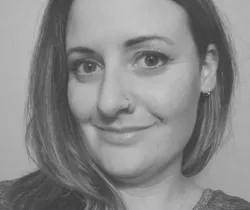Elise Taylor


With more and more conference and event organizers competing to attract participants, it is important to use every strategy available to “get the word out”. Conference and event speakers are a largely untapped resource.
Many keynote speakers and breakout session facilitators have extensive and active networks both on and off-line. By enlisting the aid of speakers to reach out to their existing connections, event planners can tap into an unmined pool of potential attendees.
Here are 6 ways to engage speakers and facilitators in pre-event marketing. No matter what strategies you select it is extremely important to spell out exactly what is expected in speaker contracts and facilitator agreements.
1. Content sharing
As you release information about the event on social media, through email, and via other channels, ask your speakers to share it. The opportunities for engagement are endless. Speakers can re-tweet content, like and comment on LinkedIn , Facebook, Instagram, and Snapchat status updates. It takes a few seconds but social media engagement ensures that your content will be distributed to a wider and wider audience.
2. Pre-conference interviews
Someone from your organizer can interview each speaker and facilitator and prospective participants can ask questions. YouTube live works well as it is interactive. Skype calls can also be recorded.
Videos remain on-line as promotional tools that can be shared on social media or incorporated into web pages or blog posts.
3. Twitter chats
Twitter chats are some of the most effective ways of “getting the word” out about conferences. To use them effectively, your network must be in place before you need it.
Create a customized hashtag for your organization or event. Use it to share content on Twitter and host Twitter chats regularly. Even if your chats are just once a month, you can attract a following and switch to weekly chats with speakers and facilitators when event marketing kicks into high gear.
4. Guest Blog Posts
Many keynote speakers and facilitators have their own blogs. Likely they already have existing material that they can easily customize.
5. Pre-event “Ask the Speaker” sessions
Pre-event “ask the speaker” sessions can take place on a variety of platforms. Facebook Live, Google Hangouts On Air, and one of the many webinar platforms can be used for pre- conference engagement with speakers.
6. Promotional video clips and pre-roll
With a creative approach, video has the power to go viral. Make it clever and upbeat. Use clips from your speakers. Share the video both on and off-line. Vimeo, YouTube, and Facebook are just a few possibilities. YouTube offers targeted pre-roll: short clips that run before viewers access the content they have requested.
Once you have videos, definitely tweet them. Don’t forget to post them on LinkedIn where videos are underutilized but highly visible.
As GBTA Canada has demonstrated, videos from last year’s conference can be used on your website to build excitement for your next conference.
7. Enlist the assistance of speakers in e-mail campaigns to their own network of contacts
Prepare brief, copy ready, promotional pieces. Ask speakers to include them in their own e-mail campaigns.
In Summary
Speakers can be your best event advocates if you let them know what is expected and find effective strategies to use them. They can help build excitement for your event and ensure that event marketing efforts go more smoothly.
What strategies have YOU used to leverage speakers as event advocates?
First published HERE on EventMobi.com.

Add new comment